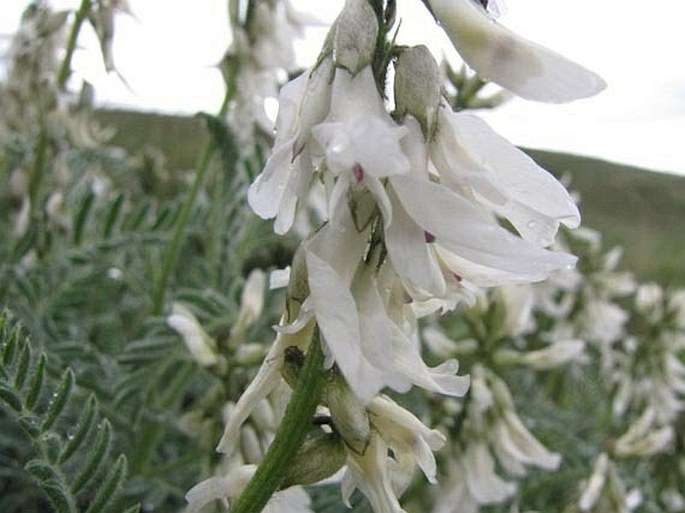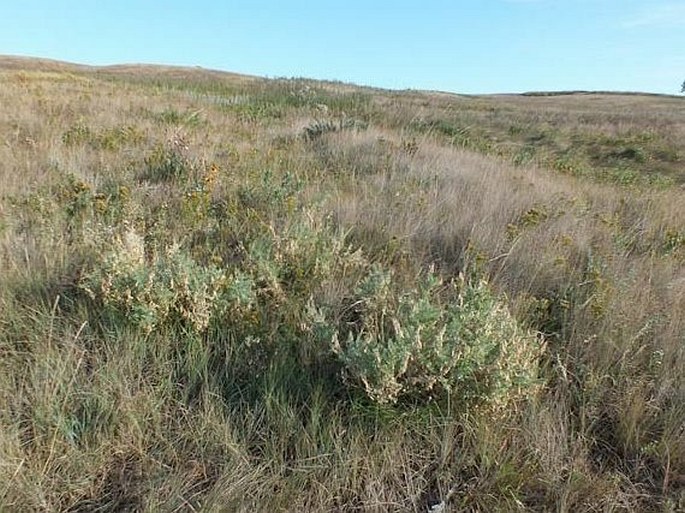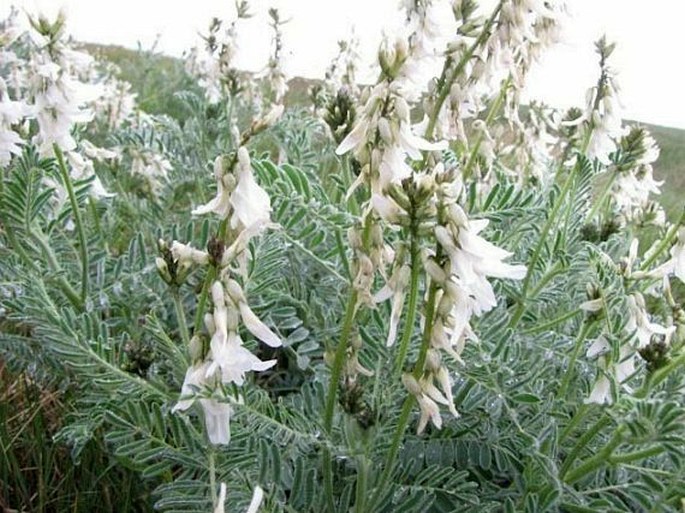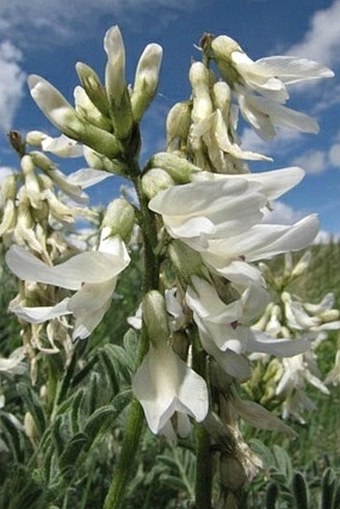Syn.: Tium drummondii (Hook.) Rydb., Tragacantha drummondii (Hook.) Kuntze
Family: Fabaceae Lindl.

Distribution: Midwest of North America, found in areas from British Columbia and Saskatchewan through Montana, west of both Dakotas and Colorado down to northern New Mexico.
Ecology: It grows in prairie but also on dry slopes of eastern drainage of Rocky Mountains. Blooms in June and July.

Description: Perennial herb, stems and leaves all silvery hairy, 40–70 cm tall. Leaves are alternate, 6–14 cm long, pinnately divided, 13–31 leaflets, ovoid or narrowly elliptical, 20–35 mm long, 2–10 mm wide, silvery. Inflorescence has 20–50 flowers with long stalks, calyx 8–11 mm long, hairy, corolla 18–25 mm long, whitish, sometimes with reddish marking on the keel. Fruit is a hanging bare legume 2–4 cm long.
Usage: Northern peoples chewed the roots and swallowed the juice to relieve stomachaches and cramps. Plants with dry seed pods were used as noise-makers in religious ceremonies.
Note: Specific name is after Thomas Drummond (1780–1835), Scottish explorer, plant collector and naturalist.







These images were taken in Canada, Alberta, Calgary, Nose Hill Park (summer of 2013).


